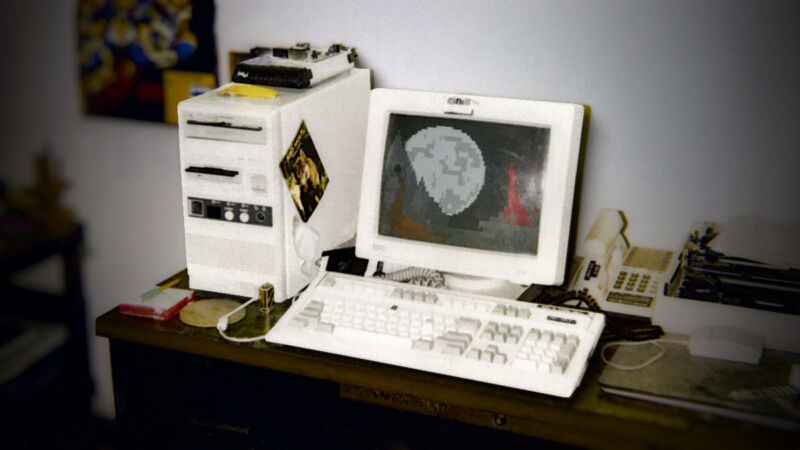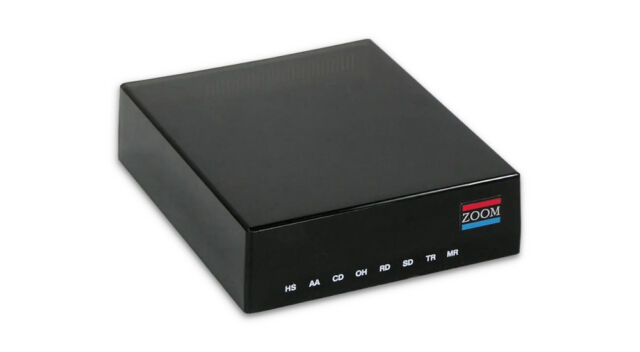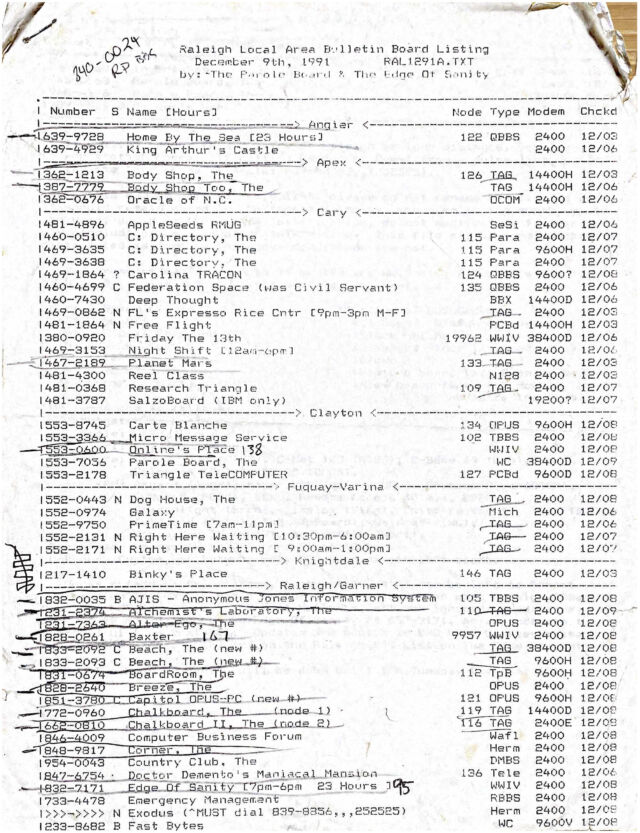
Thirty years ago last week – on November 25, 1992 – my BBS first came online. I was only 11 years old and working from my dad’s Tandy 1800HD laptop and a 2400 baud modem. The Cave BBS quickly grew into a bustling 24-hour system with over 1,000 users. After a seven-year break between 1998 and 2005, I’ve been running it again ever since. Here’s the story of how it started and the challenges I encountered along the way.
Enter the modem
In January 1992, my father brought home a gateway to a parallel world: a small black Plexiglas box labeled “ZOOM” that plugged into a PC’s serial port. This modem gave the ability to connect to other computers and share data over the dial-up telephone network.
While commercial online services such as CompuServe and Prodigy existed at the time, many hobbyists had their own miniature online services called bulletin board systems, or BBSs for short. The Internet existed, but was not widely known outside academic circles.

John Scagon
While the Internet is a vastly connected web of systems with billions of users, most BBSs were small hobbyist fiefdoms with a single phone line, and only one person could dial in and use at a time. While BBS-to-BBS messaging networks were common, each system still felt like its own island culture with a tin pot dictator (the system operator – or “sysop” for short) ruling over everyone who visited it.
Not long after my father brought the modem home, he handed over a photocopied list of hundreds of BBS numbers from our 919 North Carolina area code. At the time, the phone company charged significant fees for long-distance calls (which could also sneak parts of your area code), so we’d stick to BBSes in our area. This made BBSes a mostly local phenomenon in the US.

Ben Edwards
Modem in hand, my older brother – about five years older than me – first embraced calling BBSes (we called it “BBSing”). He filled his Procomm Plus dialing list with local favorite BBSs like The Octopus’s Garden, The Body Shop, and Chalkboard. Each system got its own flavor from its sysop, who decorated it with ANSI graphics or special menus and also acted as a presenter and moderator for the board’s conversations.
I have a clear memory of the first time I realized what a BBS was. One day, looking over my brother’s shoulder, he showed me the file section of one of those BBSs – a list of available files that you could download to your local computer. Pages of free downloadable shareware games scrolled by. My eyes widened and something clicked.
“Can you download free games?” I remember thinking. I saw a file called “RAMPAGE.ZIP” that was a hundred kilobytes in size – or “100K”, as stated. Think about rampage on the NES, one of my favorite games at the time, I asked my brother to download it. He declined because it would have taken more than five minutes to switch to our 2400 BPS modem. Each file of about a megabyte would take about an hour to download.
Online time was precious back then. Since most BBS’s only had one phone line, you didn’t want to overload the line or the sysop could boot you. And there was added danger involved. Since we were using our regular home phone line to connect, the chances of my mom answering and trying to dial out—thus ruining the transfer—were very high. But whatever the risks, the thrill of computer remote projection dawned on me that day and has never left.

